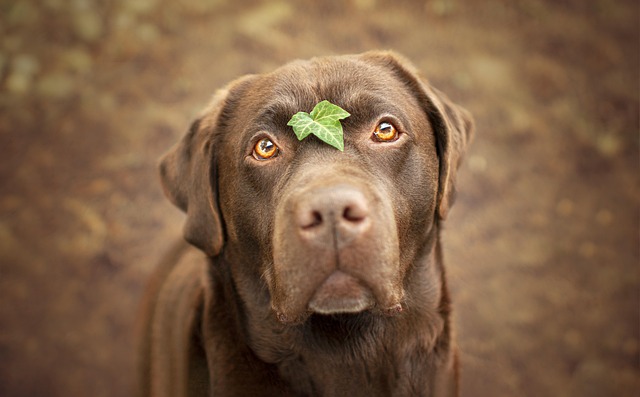
What is the best type of training for a dog?
There’s no one-size-fits-all answer to what makes the best dog training, but most experts agree that methods built on positive reinforcement tend to yield the most lasting results.
Every responsible dog owner knows that moment of panic when their dog lunges towards something potentially dangerous on a sidewalk – discarded food, medication, or even wildlife. Teaching a reliable "leave it" command isn't just about convenience; it's a vital safety skill that can prevent emergencies and costly vet bills. This foundational instruction empowers dogs to resist powerful instincts to grab, chew, or investigate items that could harm them, fostering safer walks and greater peace of mind. The burning question for many new pet parents is inevitably: how long does it take to train a dog to leave it effectively?
Predicting an exact timeline for how long to train a dog to leave it is impossible, as numerous factors interplay significantly. Breed predispositions matter immensely; a scent-hound like a Beagle driven by nose may find ignoring a tantalizing smell far harder initially than a biddable breed like a Labrador, impacting the leave it command training duration. Age plays a crucial role too. Puppies possess shorter attention spans but are often blank slates, while older dogs might have ingrained habits or learned that grabbing things gets them attention. Individual temperament is paramount – a naturally impulsive dog will require more repetition than a calm, thoughtful one. Previous training experience also sets the stage; a dog familiar with basic obedience like "sit" and "stay" often grasps new concepts like "leave it" faster than one with no foundation. A rescue dog with unknown history might present unique challenges compared to a puppy raised consistently.
Understanding dog psychology for training transforms the process from mechanical repetition to meaningful communication. Dogs don't possess inherent human morals; their actions are driven by instinct, learned associations, and consequences. The "leave it" command fundamentally asks them to override powerful drives – curiosity, prey drive, or scavenging instincts – which requires significant impulse control. Recognizing this helps us appreciate why it's challenging and why frustration is counterproductive. Grasping canine body language allows us to see the subtle signs of temptation before the lunge – the slight freeze, the intense stare, the lowered head. This insight lets us intervene proactively during training sessions, setting the dog up for success rather than failure, making the entire process more efficient and less stressful for both parties.
Setting rigid expectations for how long to train a dog to leave it sets everyone up for disappointment. While some exceptionally motivated dogs might grasp the basics in a few focused sessions over a week, achieving rock-solid reliability in high-distraction environments often takes weeks, sometimes months, of consistent practice. Don't be discouraged if your eager Labrador seems to "get it" quickly indoors but forgets entirely at the park; this fluctuation is entirely normal. Progress is rarely linear. Expect plateaus, occasional regressions, and varying success rates depending on the distraction level and value of the forbidden item. The key isn't speed, but consistent progress towards unwavering understanding and compliance, regardless of the environment. Focusing on the journey of building understanding, rather than a fixed deadline, fosters patience.
Effective dog training leave it tips hinge on proven methods that align with canine learning. Start simple in a low-distraction environment using low-value items. Consistently use the same cue ("Leave it") and ensure everyone in the household does the same. The cornerstone is positive reinforcement – lavishly reward the dog with high-value treats or enthusiastic praise the *moment* they disengage or choose to ignore the item. Never punish failure; simply reset the scenario and try again. Gradually increase difficulty: use higher-value items, introduce mild distractions, practice in different locations, and eventually simulate real-world scenarios. Short, frequent sessions (5-10 minutes) are vastly more effective than infrequent marathons. Patience isn't just a virtue; it's a requirement. If progress stalls significantly, consulting a certified professional dog trainer can provide invaluable personalized guidance and troubleshoot specific issues, potentially accelerating the learning curve.
Ultimately, the time investment required to train a dog to leave it reliably is variable but profoundly worthwhile. By appreciating the individual factors influencing your dog, leveraging insights into canine psychology, setting realistic milestones, and employing consistent, reward-based strategies, you build far more than just obedience. You cultivate trust, enhance safety, and deepen your bond. This command exemplifies how understanding the "why" behind dog behavior empowers us to communicate effectively. Celebrate the small victories along the way – each successful "leave it," whether practiced at home or mastered amidst squirrels at the park, represents a significant step towards a safer, happier life together. Keep sessions positive, stay consistent, and trust the process; the payoff in peace of mind and canine safety is immense.

There’s no one-size-fits-all answer to what makes the best dog training, but most experts agree that methods built on positive reinforcement tend to yield the most lasting results.

Welcoming an 8-week-old puppy into your home is a joy filled with wiggly tails and endless curiosity. One of the first steps in building a strong bond is teaching them their name.

If you’ve ever sat up at night, listening to your gray-muzzled dog pace back and forth, stopping to whine or stare at a wall, you know the worry that comes with a restless senior pup.

Training a service dog starts long before they’re ready to assist with specific tasks—their journey begins with building a foundation of trust, focus, and adaptability, and the timing of this training matters more than you might think.

Watching a tiny puppy fumble through their first attempts to sit can feel like watching a little acrobat mastering a new trick.

If you’ve ever found your flower bed dug up or your favorite shrub chewed to bits, you’ve probably searched for easy ways to keep neighborhood dogs (or even your own) out of your yard.